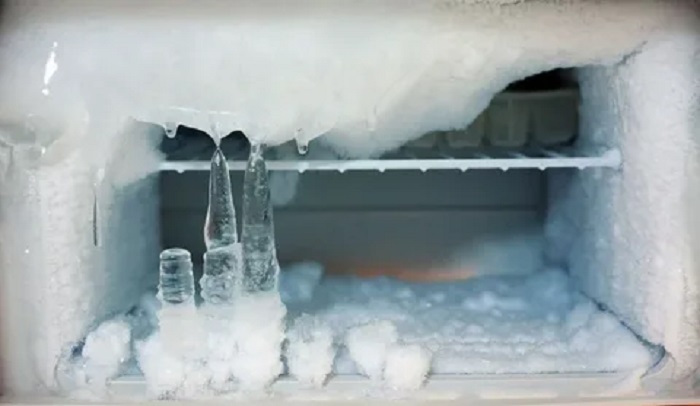A freezer that suddenly stops keeping food frozen can cause immediate stress — melted ice cream, thawed meat, and rising temperatures that point to a hidden malfunction. In most cases, the cause is mechanical or airflow-related and can be corrected without replacing the entire appliance. Below are real freezer repair cases showing how technicians solved such problems.
Case 1: Frost-Clogged Evaporator Coil
A common reason for a warm freezer is ice buildup on the evaporator coil. In one case, a customer reported that the freezer worked fine for a few days after defrosting, then slowly got warm again. When the back panel was removed, the coil was covered with solid frost. The defrost heater tested open-circuit — it no longer heated up to melt ice during automatic cycles. The technician replaced the heater and defrost thermostat, verified continuity, and reassembled the unit. Within several hours, the freezer temperature dropped back to normal and remained stable for weeks.
Case 2: Faulty Evaporator Fan Motor
Another household complained about uneven cooling — the top shelves were cold, but the bottom remained soft. The evaporator fan, which circulates cold air through the compartment, had stopped spinning. After removing the motor assembly, the technician found corrosion inside the connector. Installing a new fan motor restored full airflow. The customer was advised to keep air vents clear to maintain circulation.
Case 3: Compressor Relay Failure
Sometimes the problem is on the power side. In one repair, the compressor was silent, and the freezer interior was warm. Voltage reached the start relay, but the relay clicked repeatedly without engaging the compressor. Testing confirmed the relay was defective. A new relay and overload protector were installed. Once connected, the compressor started smoothly, and frost began forming on the coil within ten minutes.
Case 4: Blocked Condenser Coil and Overheating
Dust and pet hair on the condenser coils reduce heat exchange and cause high internal temperatures. In a service call, a technician measured abnormally high pressure in the sealed system. Cleaning the coils with a vacuum and brush lowered the pressure immediately. After 24 hours of normal operation, the freezer maintained −18°C consistently. Regular cleaning of condenser coils is one of the simplest ways to prevent overheating.
Case 5: Temperature Sensor Out of Range
Freezers with electronic control boards rely on thermistors to read internal temperature. In one example, the display showed “0°F,” but the actual temperature was closer to +20°F. Testing the sensor revealed an incorrect resistance reading. After replacing the thermistor, the control board received accurate data and adjusted compressor cycles accordingly. The freezer returned to proper cooling within hours.
Case 6: Door Seal Leakage
A freezer door that does not close tightly allows warm air to enter, leading to frost buildup and loss of cold. In one case, a small tear in the magnetic gasket went unnoticed. The technician replaced the gasket and checked alignment with a piece of paper — it now held firm all around. This small repair solved temperature fluctuation issues completely.
Lessons from These Cases
Warm freezers rarely fail without warning. Early signs — longer compressor cycles, thin frost layers on walls, or occasional water puddles — indicate developing faults. Regular cleaning, inspecting door seals, and ensuring proper ventilation behind the unit significantly reduce the chance of temperature loss.
Every freezer problem has a cause, and the examples above show that finding it requires methodical checks — airflow, sensors, power, and seals. Once identified, most repairs are straightforward, and the freezer returns to its main task — keeping food safely frozen.

